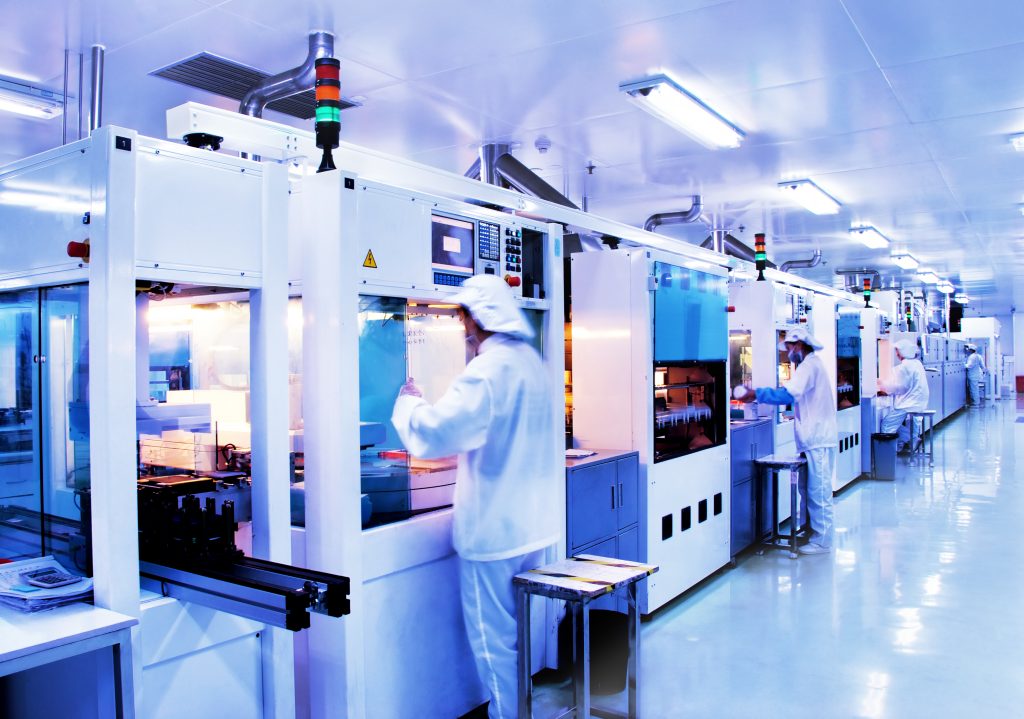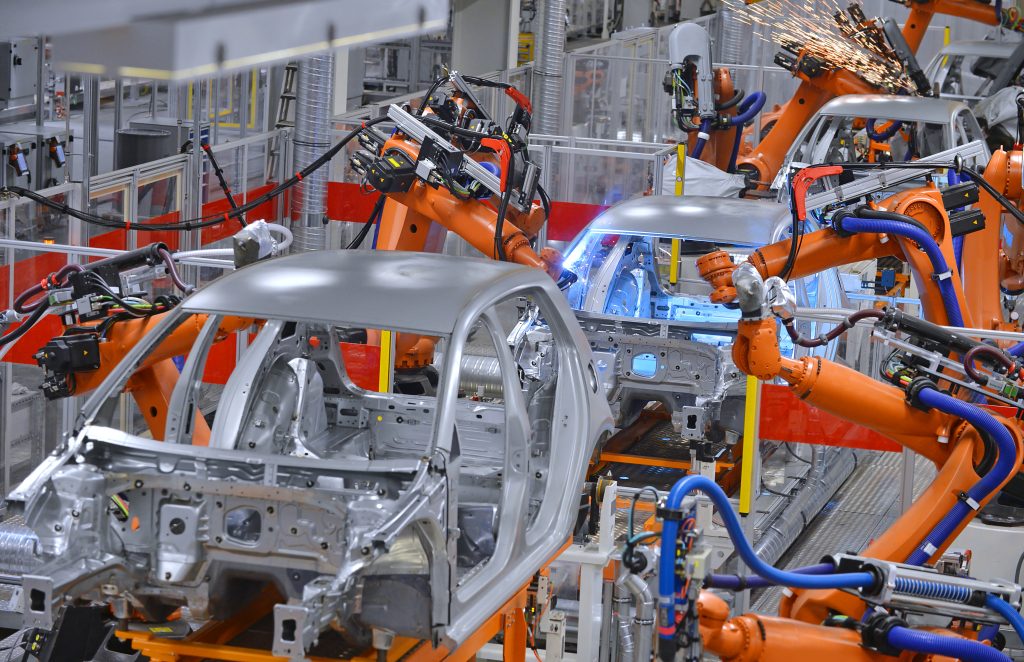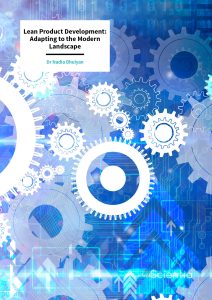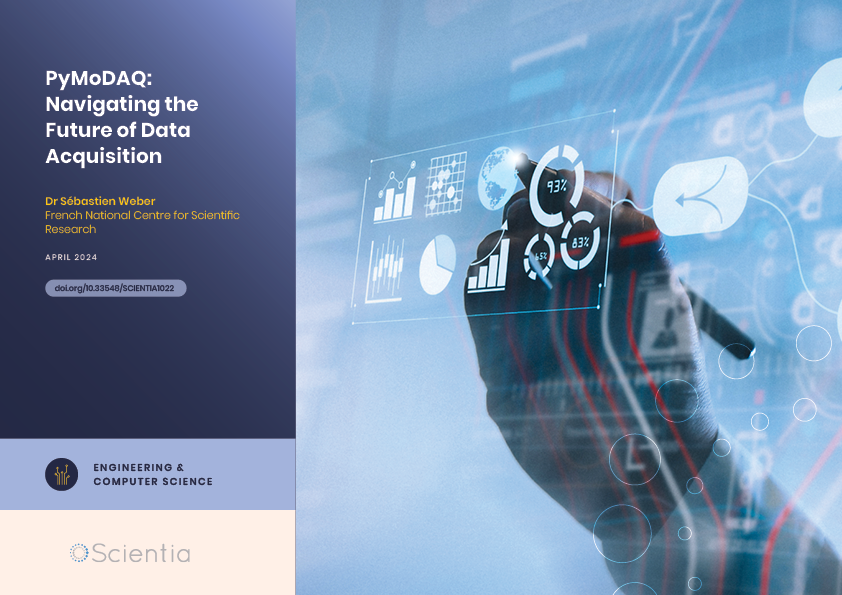Dr Nadia Bhuiyan – Lean Product Development: Adapting to the Modern Landscape
Perfecting the product development process presents a daunting challenge to many modern companies, which must compete within their industries on a global stage. Through her research, Dr Nadia Bhuiyan at Concordia University shows how many different aspects of the process can be streamlined through the use of ‘lean’ processes – which aim to eliminate any waste in time, resources, and information. Through a combination of theory, analytical modelling, and case studies, her discoveries offer important new guidance for how companies can continue to thrive in an uncertain future.
Product Development
The world of product development is staggeringly dynamic and competitive. As companies strive to keep pace with their competitors, they must continually release new products or services that meet the requirements of their customers. The process involves a constant flow of information throughout complex networks of people and systems, as they design, build, and test new products.
These networks can easily contain hundreds or even thousands of people, and may be spread across wide geographical areas – making the process expensive and time-consuming. All the same, even the most robust approaches to product development offer no guarantee of a successful final product, creating a constant atmosphere of uncertainty within modern companies.
Added to this, companies across a diverse array of sectors are now facing increasingly intense, global-scale competition – particularly from industries in China and India. One area where this pressure is felt particularly strongly is in Canada’s aerospace sector, which employs over 200,000 people across over 700 companies. The sector was ranked as the most competitive in the world just 10 years ago – but within the rapidly changing landscape of product development and the pandemic, this position is now looking increasingly precarious.
To address these issues, Dr Nadia Bhuiyan and her colleagues at Concordia University and other collaborating universities explore an approach to product development that has now been around for decades, but has so far faced significant challenges in adapting to the modern landscape. Through her study of ‘lean’ product development, Dr Bhuiyan aims to show how the aerospace industry, along with many others, can reduce costs and achieve unprecedented efficiency – allowing companies to design and release new products at the rapid pace required to remain competitive on a global scale.

Slimming Down the Manufacturing Process
In the early days of large-scale manufacturing, much research went into the development of processes that enable the most efficient use of time and resources. By ensuring minimising material waste, and preventing production bottlenecks, these approaches allowed companies to significantly enhance their productivity and profit. In the late 1980s, Japanese car manufacturer Toyota built on this approach to drastically transform their manufacturing processes.
By assessing aspects of the process that were unnecessary, the company cut the time required to design, test, and manufacture a new car from up to 40 months, down to just 10. Subsequently, the term ‘lean manufacturing was coined by MIT’s International Motor Vehicle Program to describe this cutting-edge approach, and was soon rapidly adopted by Toyota’s competitors.
However, in the decades since Toyota’s innovations, the landscape of product development has completely transformed – integrating many different types of data, generated across the globe. As these changes take place, Dr Bhuiyan’s research shows that today’s companies still have much to learn about the capabilities of lean product development, as they strive to become more competitive.
In a modern context, waste can no longer be quantified purely as time or physical materials – but also by the information gathered about all conceivable aspects of the product development process. This distinction has important implications for how modern manufacturers operate.

A Different Modern Landscape
Previous studies have revealed that in modern companies, only around 5% of all work done is actually adding value to the products delivered to customers. While a further 35% is essential to the smooth operation of the company, this still means that some 60% of all tasks these companies carry out are all but unnecessary. In order to cut out this waste, Dr Bhuiyan aims to develop new approaches to lean product development – through which data can flow, and knowledge be exchanged, as efficiently as possible.
Unlike previous lean approaches, product development in this case can’t simply be treated as a series of standardised steps that can simply be repeated for every project. Instead, it must be treated as an organic and inherently complex process, where high levels of uncertainty are inevitable. If achieved, these systems can enable a far more streamlined flow of information – in wide-ranging forms such as design requirements, performance models, and drawings, across intricate global networks.
Through her research, Dr Bhuiyan has now analysed the advantages of her approach to lean product development using various analytical methods, including computer simulations – which account for factors such as multitasking, the size and necessity of each task, and budgeting decisions. Crucially, her team’s latest models can be generalised to any company – accounting for factors including people, processes, and available tools. As a result, they can provide a robust foundation for enhancing the performance of lean product development, while accounting for varying levels of uncertainty.
Examining Real Companies
After developing their analytical models, Dr Bhuiyan and her colleagues evaluated their performance in analysing real-world processes through a variety of case studies. Among these was a medium-sized aerospace company in Canada, which had just started implementing an approach to lean product development derived from Dr Bhuiyan’s results. Over the course of a year, the team used a combination of in-depth interviews, meetings, and company documentation to assess its performance.
As hoped, they found that the company was highly successful in addressing a wide range of aspects of organisation, in which the needs of customers were always viewed as the highest priority. Based on this success, lean product development was soon adopted by other companies, across a wide variety of other industries. In the future, Dr Bhuiyan predicts that it will likely be taken up by more companies.
Perhaps one major concern of this uptake is that through such a drastic increase in efficiency, not as many people will be needed to carry out tasks – and many jobs could be lost as a result. Yet for Dr Bhuiyan, this certainly isn’t the case; instead of getting rid of jobs, she argues that lean product development can provide new opportunities to work on a broader range of tasks, which are all geared towards improving the overall organisation. Indeed, lean approaches can ultimately help workers to do the right tasks at the right times, giving them far more satisfaction with their jobs.

Striving for Perfection
Based on the results of this extensive research, Dr Bhuiyan and her colleagues have now gained a clear picture of how truly robust lean product development systems can be defined. As Dr Bhuiyan describes, the ultimate goal for any company is to strive for perfection, in terms of the value of the products and services it offers. With this in mind, the first necessary step in any lean product development process is to define what value actually means for a specific product, from a customer’s perspective.
From here, any waste can be easily identified and removed – by reconfiguring workflows, and freeing up resources across all aspects of the product development network. Companies have many different tools and technologies at their disposal to optimise their lean product development performance, and Dr Bhuiyan stresses the importance of selecting them appropriately. Since waste often occurs due to poor communication, effective lean processes must feature integrated teams – who work together from initial designs by engineers; through the building and testing of prototypes; and to the final manufacture and delivery of products to customers.
In the process, these teams can continually access, exchange, and communicate information with one another. As these groups spend time making necessary changes to the product development process, they can prevent any costly consequences from emerging downstream. Since valuable engineering time is often spent correcting these problems in later stages of development, this approach can prevent significant amounts of waste.
In turn, teams can make better use of the tools available to them to fully understand the requirements of their customers, and translate them into final product designs. Ultimately, Dr Bhuiyan shows how this approach puts the streamlined flow of data at the heart of the lean product development process – enabling companies to keep afloat within a dynamic, fiercely competitive modern landscape.
Future-proofing Product Development
Dr Bhuiyan’s research has already had a considerable impact on the Canadian aerospace industry, and has secured substantial grants from Canada’s Natural Sciences and Engineering Research Council. In the future, her team hopes to continue exploring cutting-edge ways to eliminate waste from the sector, while retaining a competitive edge on an international stage.
Elsewhere, lean product development is enabling the aerospace industry to handle increasing pressure to reduce environmental impacts. While innovations that improve environmental sustainability are often notoriously difficult to integrate into final products, the research of Dr Bhuiyan and her colleagues is making significant strides towards designs of lighter, quieter, and more fuel-efficient aircraft, without incurring unfeasible costs for manufacturers.
Going further, Dr Bhuiyan hopes that lean product development will be increasingly applied across a more diverse array of other sectors – such as in healthcare systems, where she and her team have shown that they could be used to address long wait times, and inefficient flows of patients, ultimately leading to faster treatments and potentially saving many lives.
SHARE
DOWNLOAD E-BOOK
REFERENCE
https://doi.org/10.33548/SCIENTIA763
MEET THE RESEARCHER

Dr Nadia Bhuiyan
Department of Mechanical, Industrial and Aerospace Engineering
Concordia University
Montreal, Quebec
Canada
Dr Nadia Bhuiyan completed her PhD in Mechanical Engineering at McGill University, Canada, in 2001. Upon graduating, she worked for a year as an Assistant Professor at Queen’s University in the School of Business, in Kingston, Canada before going back to her hometown and alma mater, where she joined the Department of Mechanical and Industrial Engineering at Concordia University in 2002, and has been a full Professor here since 2014. Her research interests focus on product development processes – including the design, development, production, and distribution of goods and services. In particular, she explores emerging tools and techniques that allow companies to integrate their design and manufacturing processes – helping to improve their performance. Dr Bhuiyan studies how the principles of lean manufacturing can be applied in product development, as well other research topics with major projects at aerospace companies including Siemens Canada, and Bombardier Aerospace, as well as in healthcare organisations such as major hospitals and clinics in Montreal.
CONTACT
E: nadia.bhuiyan@concordia.ca
W: https://www.concordia.ca/ginacody/ciadi/faculty.html?fpid=nadia-bhuiyan
W: https://www.concordia.ca/provost/about/areas/partnerships-experiential-learning.html
KEY COLLABORATORS
Vince Thomson, McGill University
Donald Gerwin, Carleton University
Yvan Beauregard, École de technologie supérieure
FUNDING
Natural Sciences and Engineering Research Council of Canada
Mitacs
Consortium for Research and Innovation in Aerospace in Quebec (CRIAQ)
Bell Textron
Bombardier Aerospace
Pratt & Whitney Canada
Siemens Canada
Concordia University
FURTHER READING
T Yu, K Demirli, N Bhuiyan, Lean Transformation Framework for Treatment-oriented Outpatient Departments, International Journal of Production Research, 2021, doi.org/10.1080/00207543.2020.1870014.
R Jaifer, Y Beauregard, N Bhuiyan, New framework for effort and time drivers in aerospace product development projects, Engineering Management Journal, 2020, 76.
Y Beauregard, V Polotski, N Bhuiyan, V Thomson, Optimum utilization level for lean product development in multitasking context, International Journal of Production Research, 2016, 57, 795.
M Salari, N Bhuiyan, A new model of sustainable product development process for making trade-offs, International Journal of Advanced Manufacturing Technology, 2016, 94, 1.
D Zhang, N Bhuiyan, A Study of the Evolution of Uncertainty in Product development as a Basis for Overlapping, IEEE Transactions on Engineering Management, 2015, 62, 39.
D Gerwin, N Bhuiyan, V Thomson, A Quantitative evaluation of concurrent product development effectiveness theories, IEEE Transactions on Engineering Management, 2012, 59, 415.
N Bhuiyan, D Gerwin, V Thomson, A Comparison of Analytic, Statistical and Simulation Models for Organizing the New Product Development Process, IEEE Transactions on Engineering Management, 2012, 59, 415.
N Bhuiyan, A Framework for Successful New Product Development, Journal of Industrial Engineering and Management, 2011, 4, 746.
Y Beauregard, N Bhuiyan, V Thomson, Post-certification engineering taxonomy and task value optimization in the aerospace industry, Engineering Management Journal, 2011, 23, 86.
N Bhuiyan, A Baghel, J Wilson, A sustainable continuous improvement methodology at an aerospace company, International Journal of Productivity and Performance Management, 2006, 55, 671.
N Bhuiyan, D Gerwin, V Thomson, Simulation of the new product development process for performance improvement, Management science, 2004, 50, 1690.

REPUBLISH OUR ARTICLES
We encourage all formats of sharing and republishing of our articles. Whether you want to host on your website, publication or blog, we welcome this. Find out more
Creative Commons Licence (CC BY 4.0)
This work is licensed under a Creative Commons Attribution 4.0 International License. 
What does this mean?
Share: You can copy and redistribute the material in any medium or format
Adapt: You can change, and build upon the material for any purpose, even commercially.
Credit: You must give appropriate credit, provide a link to the license, and indicate if changes were made.
SUBSCRIBE NOW
Follow Us
MORE ARTICLES YOU MAY LIKE
Professor Giorgio Buttazzo | Artificial Intelligence and a Crossroads for Humanity
Where do we stand with artificial intelligence? Might machines take over our jobs? Can machines become conscious? Might we be harmed by robots? What is the future of humanity? Professor Giorgio Buttazzo of Scuola Superiore Sant’Anna is an expert in artificial intelligence and neural networks. In a recent publication, he provides considered insights into some of the most pressing questions surrounding artificial intelligence and humanity.
Professor Martin Trefzer | Bridging Nature and Artificial Intelligence for Smart Electronics Technology
The ever-developing world of artificial intelligence (AI) stands at the tip of a transformative breakthrough. Professor Martin Trefzer from the University of York and Professor Jim Harkin from Ulster University have introduced a revolutionary approach to neural network design. They work on an electronic system based on AI that forms the basis of the cross-disciplinary project called Nervous Systems, which aims to build electronic neuromorphic devices with an artificial intelligence system mirroring the adaptability and responsiveness of biological neural systems.
Dr Jon Tore Lieng | Dynamically Installed Anchors for Floating Offshore Turbines
Effectively harnessing offshore wind presents a valuable opportunity to increase energy supplies. Floating wind turbines present several advantages over traditional fixed turbines in more shallow waters. Dr Jon Tore Lieng from Deep Sea Anchors and colleagues have developed a type of dynamically installed anchor to hold the structures in place while reducing both the costs and complexity associated with installation where cohesive seabed sediments are realised.
Dr Sébastien Weber | PyMoDAQ: Navigating the Future of Data Acquisition
In an era where data is paramount, Dr Sébastien Weber and his team at CNRS, the French National Centre for Scientific Research, are changing the landscape for scientists and engineers with PyMoDAQ, an open-source data acquisition software. Their revolutionary tool stands out for its accessibility, versatility, and the thriving community it fosters.





